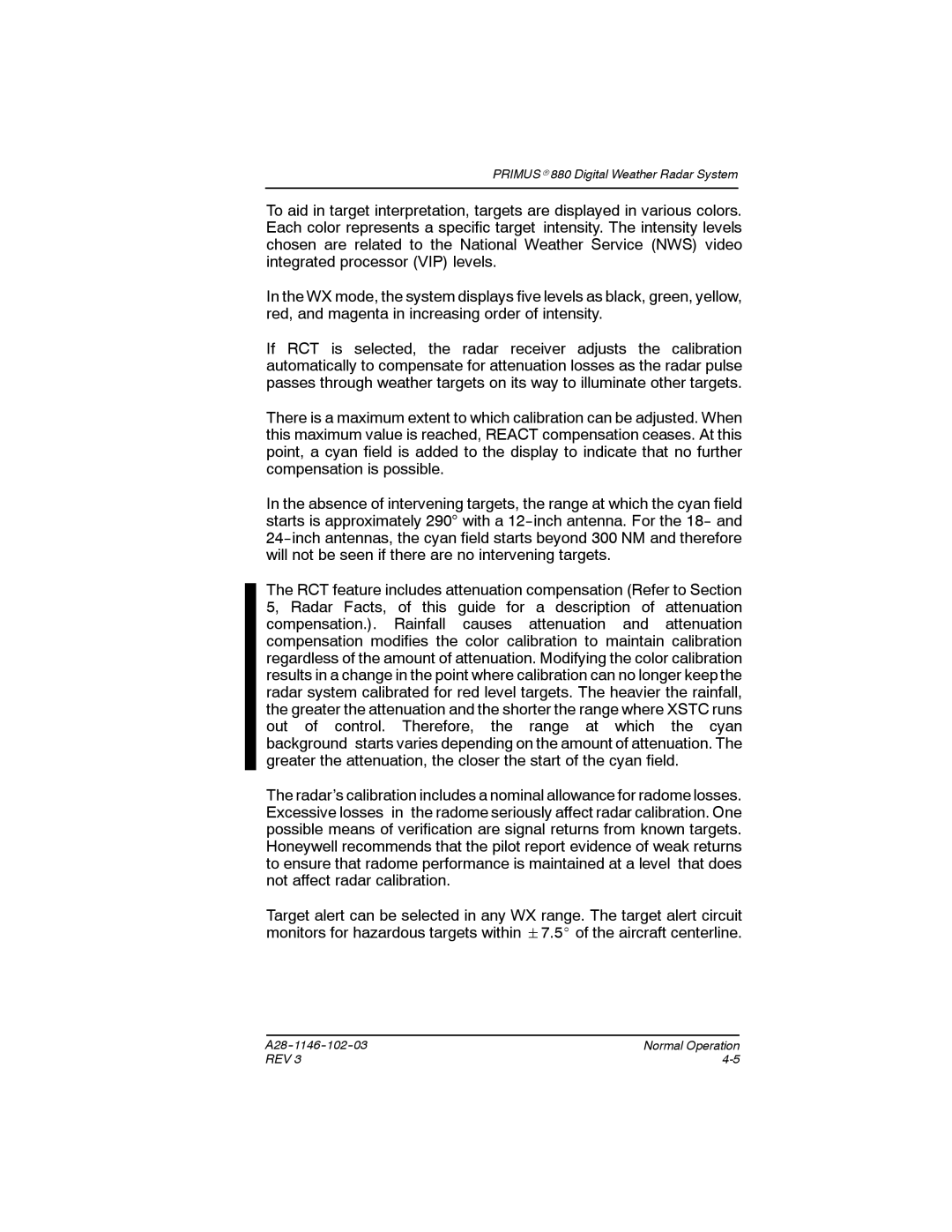
PRIMUSr 880 Digital Weather Radar System
To aid in target interpretation, targets are displayed in various colors. Each color represents a specific target intensity. The intensity levels chosen are related to the National Weather Service (NWS) video integrated processor (VIP) levels.
In the WX mode, the system displays five levels as black, green, yellow, red, and magenta in increasing order of intensity.
If RCT is selected, the radar receiver adjusts the calibration automatically to compensate for attenuation losses as the radar pulse passes through weather targets on its way to illuminate other targets.
There is a maximum extent to which calibration can be adjusted. When this maximum value is reached, REACT compensation ceases. At this point, a cyan field is added to the display to indicate that no further compensation is possible.
In the absence of intervening targets, the range at which the cyan field starts is approximately 290° with a
The RCT feature includes attenuation compensation (Refer to Section 5, Radar Facts, of this guide for a description of attenuation compensation.). Rainfall causes attenuation and attenuation compensation modifies the color calibration to maintain calibration regardless of the amount of attenuation. Modifying the color calibration results in a change in the point where calibration can no longer keep the radar system calibrated for red level targets. The heavier the rainfall, the greater the attenuation and the shorter the range where XSTC runs out of control. Therefore, the range at which the cyan background starts varies depending on the amount of attenuation. The greater the attenuation, the closer the start of the cyan field.
The radar’s calibration includes a nominal allowance for radome losses. Excessive losses in the radome seriously affect radar calibration. One possible means of verification are signal returns from known targets. Honeywell recommends that the pilot report evidence of weak returns to ensure that radome performance is maintained at a level that does not affect radar calibration.
Target alert can be selected in any WX range. The target alert circuit monitors for hazardous targets within 7.5_ of the aircraft centerline.
Normal Operation | |
REV 3 |
